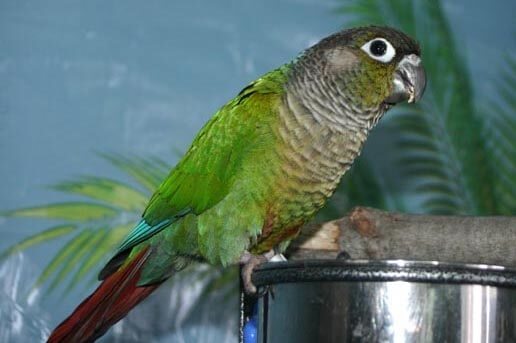The Green-cheeked Parakeet, The most complete of small parrots
Green cheeked parakeet
The Green Cheeked Parakeet is all at once: incredibly cute, charming, affectionate, energetic, curious, intelligent, interactive, noisy, messy, vindictive
“Ah! You live with a green-cheeked parakeet … it is a small parrot, it should not be too demanding!”
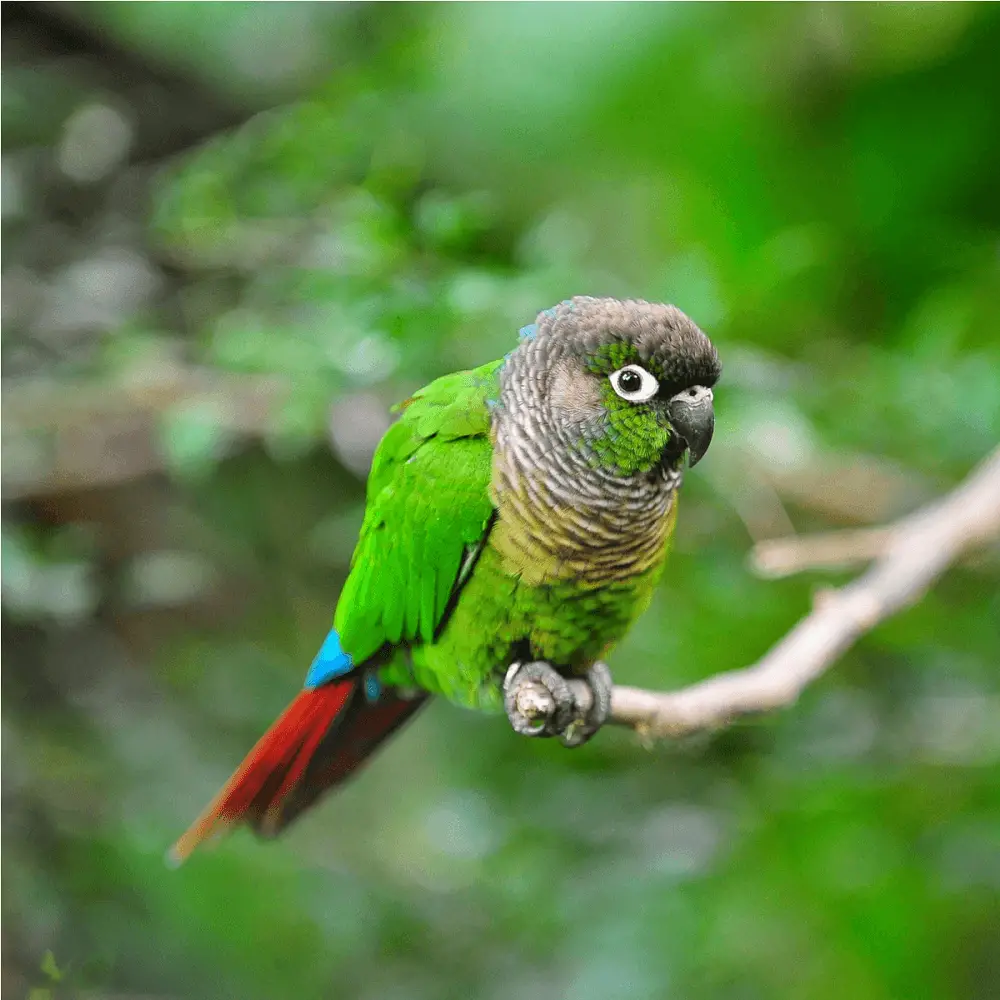
People who dare this kind of statement have certainly never encountered a green-cheeked parakeet in their life! You just have to spend some time with this parrot to understand the complexity of this little creature.
The green cheeked parakeet is all at once: incredibly cute, charming, affectionate, energetic, curious, intelligent, interactive, noisy, messy, vindictive, and limited.
Who on earth can boast of having all these qualifiers?
General description Pyrrhura molinae
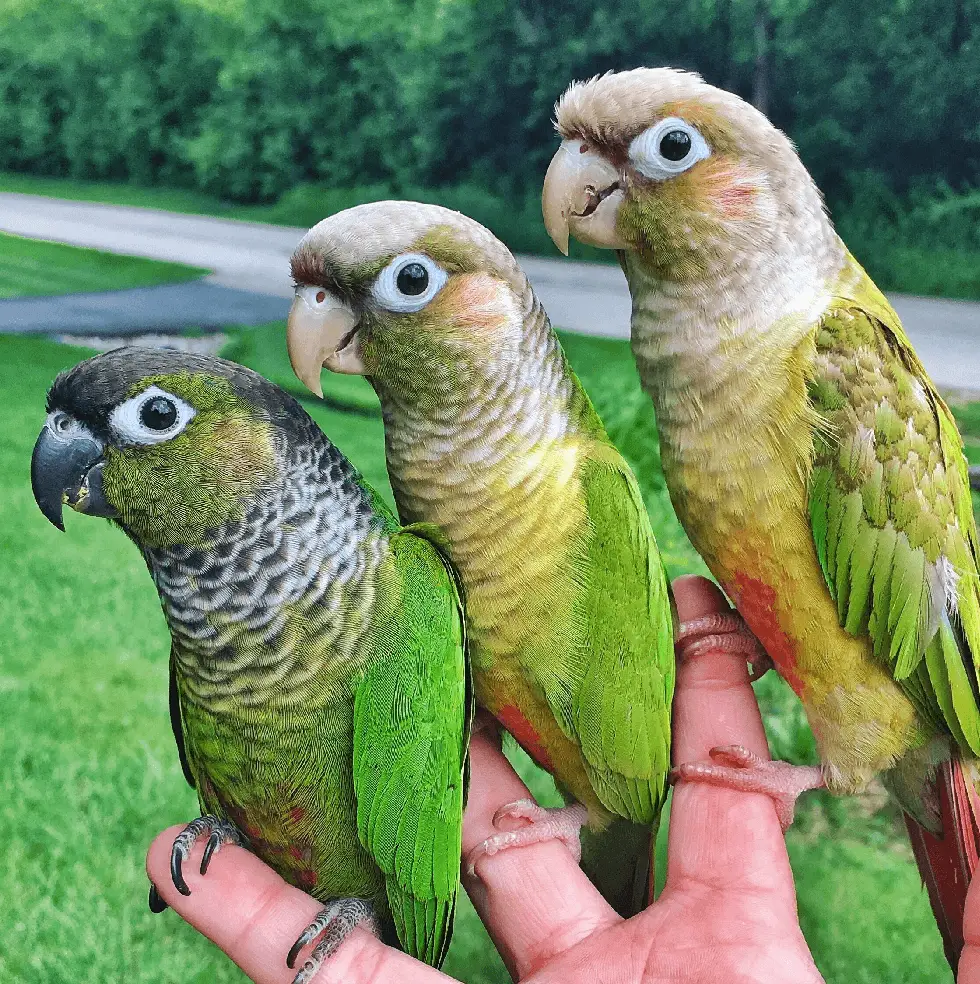
The green-cheeked parakeet (Pyrrhura molinae) is almost entirely green. He has bronze on the chest, red on the base of the abdomen and tail as well as blue on the flight feathers. He also has a black area on his head. And most surprisingly, her cheeks are green (I bet you didn’t suspect it!). Like all other species of a conure, “green cheeks” have a bare feather ring around the eye (periophthalmic ring) and a long, tapered tail.
It is a bird native to South America. It is found more precisely in Brazil, Bolivia, and Argentina. It measures approximately 26 cm (from the top of the head to the end of the tail) and its weight is approximately 70 grams. His life expectancy in captivity can go up to 30 years.
In the wild, it is a bird that lives in forests and is generally seen in broad bands at the top of trees. It is not uncommon to see groups of twenty or more. They feed mainly on seeds, berries, fruits, nuts, various vegetation, and insects. Pyrrhura molinae, affectionate bird
Temperament Green-cheeked conures are small affectionate beings, who generally like to snuggle in the palm of our hand or our neck. They sneak around: in our sleeves, in our sweater, under our blankets, they like to feel our presence near them. This personality trait makes them very endearing. They are loyal and dedicated to their favorite humans. They are cuddly little birds that do not pray long to come and give kisses. Conures are known to easily lie on their backs in the hand of their human. These are birds who will love to sleep in small tents designed expressly for this purpose.
Living with a little conure is a bit like living with a young child. Children can be curious, energetic, noisy, and always where they shouldn’t be doing what they shouldn’t be doing. If you give them the chance, conures will act the same way. By their curious nature, you should always watch them, try to predict before them what they will intend to do. They have the annoying habit of wanting to explore things that they should not get near. They are often too adventurous and it can be hazardous for them. Take the time to explore your home and identify what could be dangerous for a little beak wanting to chew. Beware of electric wires, stove rings that are still hot, the toilet bowl, uncleaned cleaning products, cushions, and blankets in which it could hide, poisonous plants, etc.
Energetic in nature, they have a great need to move. They are skilled climbers and fervent chewers. A conure, despite its small size, needs a large cage to be able to spend its energy as it pleases. He must also have lots of toys for shredding nearby, and a set-up that allows him to quench his thirst for climbing. It is also necessary to allow a lot of time outside his cage to allow him to stretch his wings. Without all of this, the conure will get bored and unwanted behaviors, such as yelling and biting, will appear.
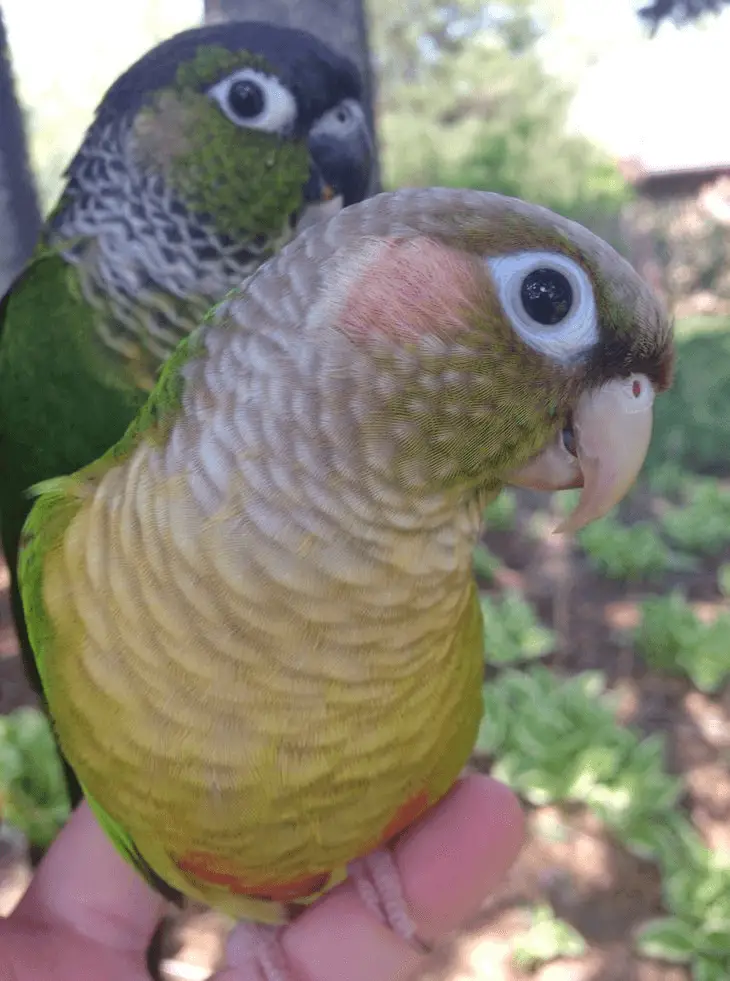
Green-cheeked parakeet, intelligent and gregarious
The green-cheeked parakeet is a gregarious bird that needs to feel accepted by its group. It’s a very interactive bird, it always wants to be part of the action, whatever the activity. “Ah! Cool, we cook! Ah! Cool, we clean up! Ah! Cool, we play Monopoly!” Everything, really everything can interest him! The more you include him in the daily activities of the house, the happier and emotional he will be.
In its clownish appearance, the green-cheeked conure is a very intelligent bird that needs both physical and mental stimulation. To keep him from getting bored, we need to constantly find activities to keep him going. Conures excel in games that involve emptying and refilling toy boxes. They can also learn a few things, such as saying “Hello” and “Goodbye.
by raising the paw and imitating the snow thrower by advancing quickly towards us with the beak stuck on the table.
At rest, the green-cheeked parakeet can look like a harmless little angel, but don’t be fooled! Once well-rested, you could be dealing with a stubborn and stubborn bird who thinks he can scare the Doberman out of the house. In their heads, conures think themselves to be the most powerful parrots in the world, and I would even go so far as to say of the entire animal kingdom. We would have to find a way to remind them that on the scale they barely weigh 70 grams!
Conures also have a bad reputation for being messy. Conures love cleaning their cage by shredding fruit, vegetables, and paper from the bottom and pushing everything outside the cage onto our floors and walls. Also, being a skilled climbers who like to walk from bar to bar, I can bet you that they will quickly be soiled with droppings and leftover food. But when you expect it, it’s always less worse! Paradoxically, they are very clean about themselves! Most conures love to bathe in anything that looks like water!
Adopt a conure, a small parrot with the characteristics of large ones.
On the vocal side, they are known to be quite noisy when compared to their size. The noise is not comparable to what a macaw or a cockatoo can do, but it can still annoy more than one. The level of decibels will increase exponentially with the number of conures we have.
Despite all these characteristics, it would seem that the genus Pyrrhura, which includes the green-cheeked parakeet, is more tranquil in nature than the genus Aratinga (another very common subspecies of the conure family) … A chance!
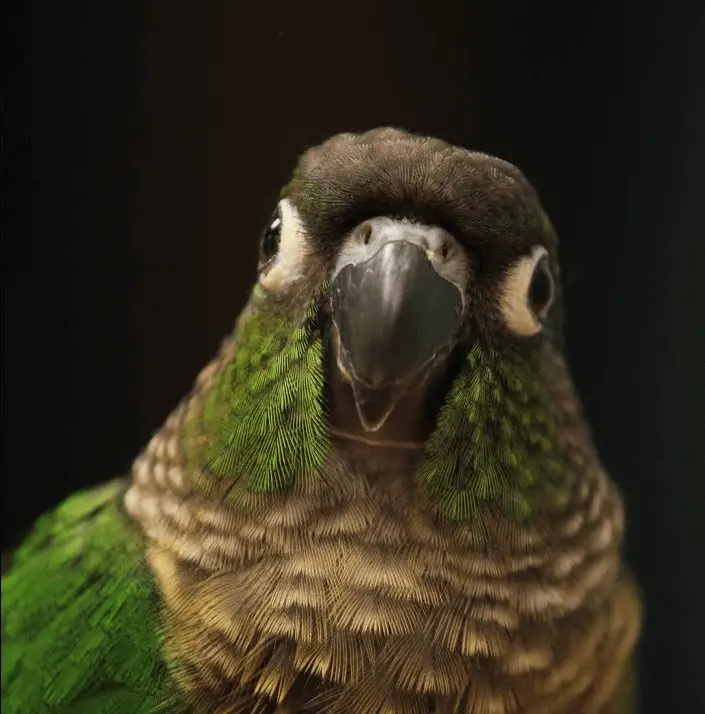
Conclusion Often seen as the next step for someone wanting to have a large parrot-like African Grey Parrot, the green-cheeked parakeet has all the personality of the large parrot but compacted into a small body. “In the little pots, the best ointments!”, Could proclaim with all their hearts, as a slogan, a peaceful community of conures! They have so much to offer, they are interactive, fun, intelligent, and demanding, that in the end following the adoption of a conure, we come to say, that we do not need the biggest parrot!

